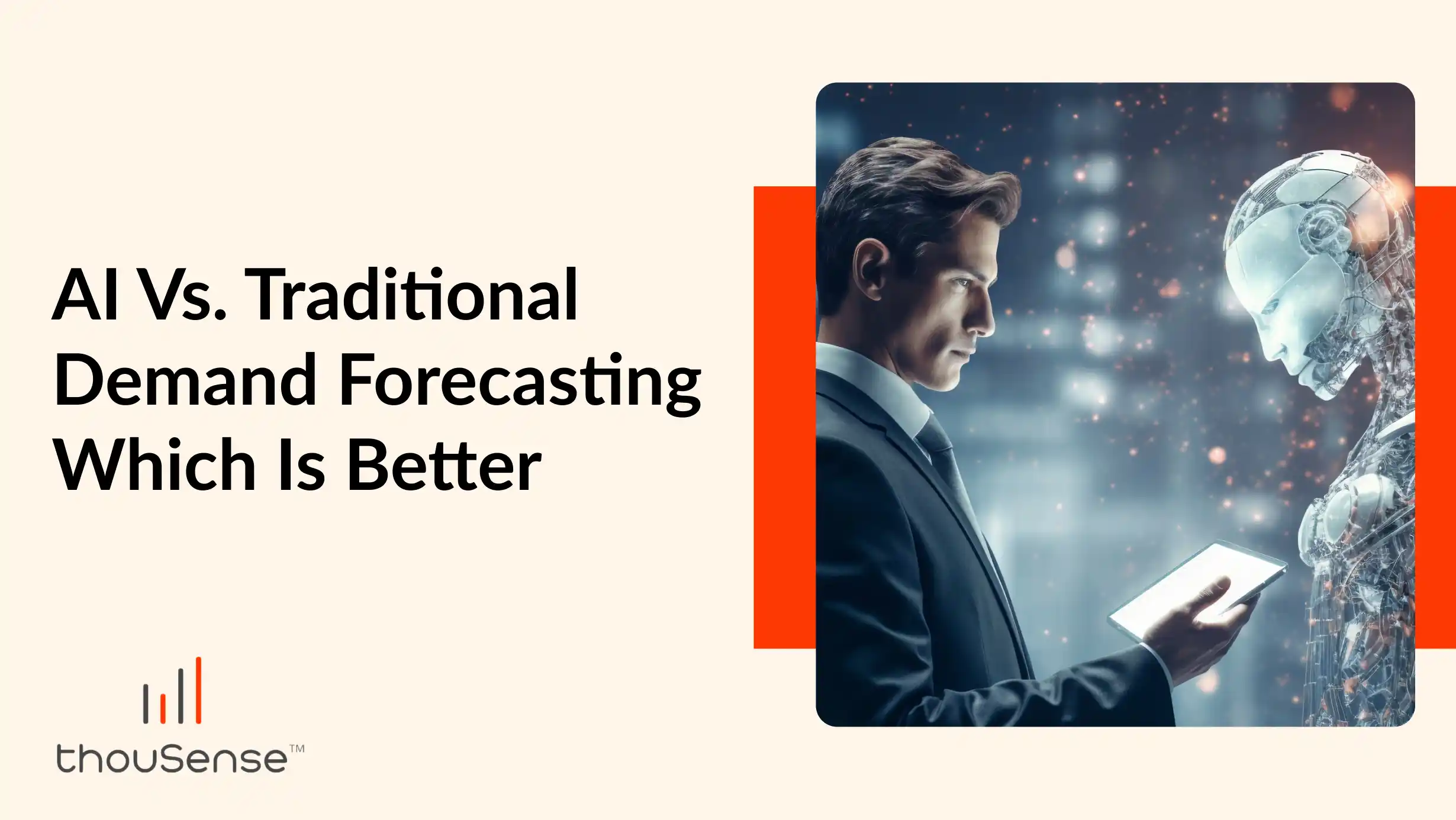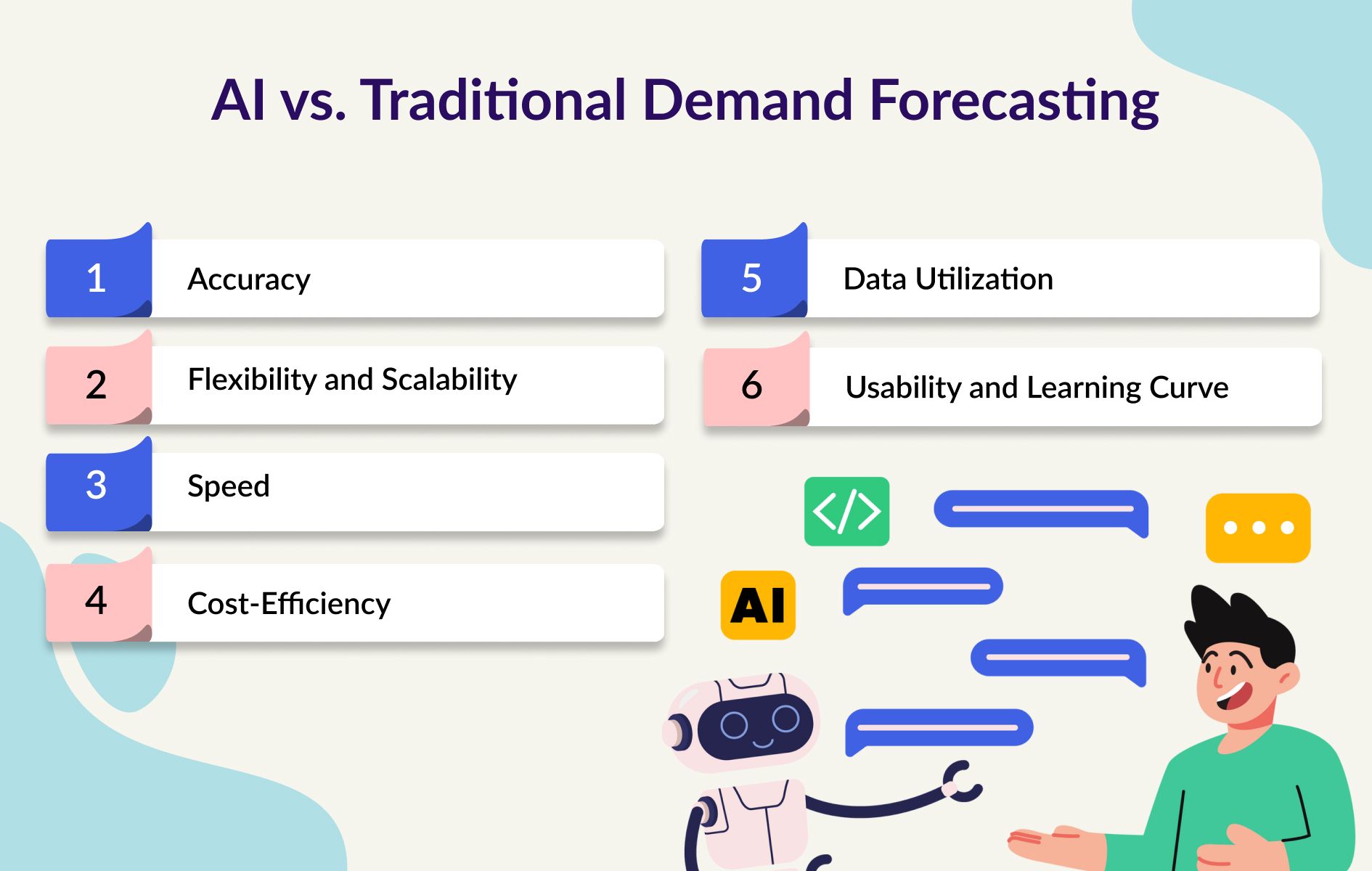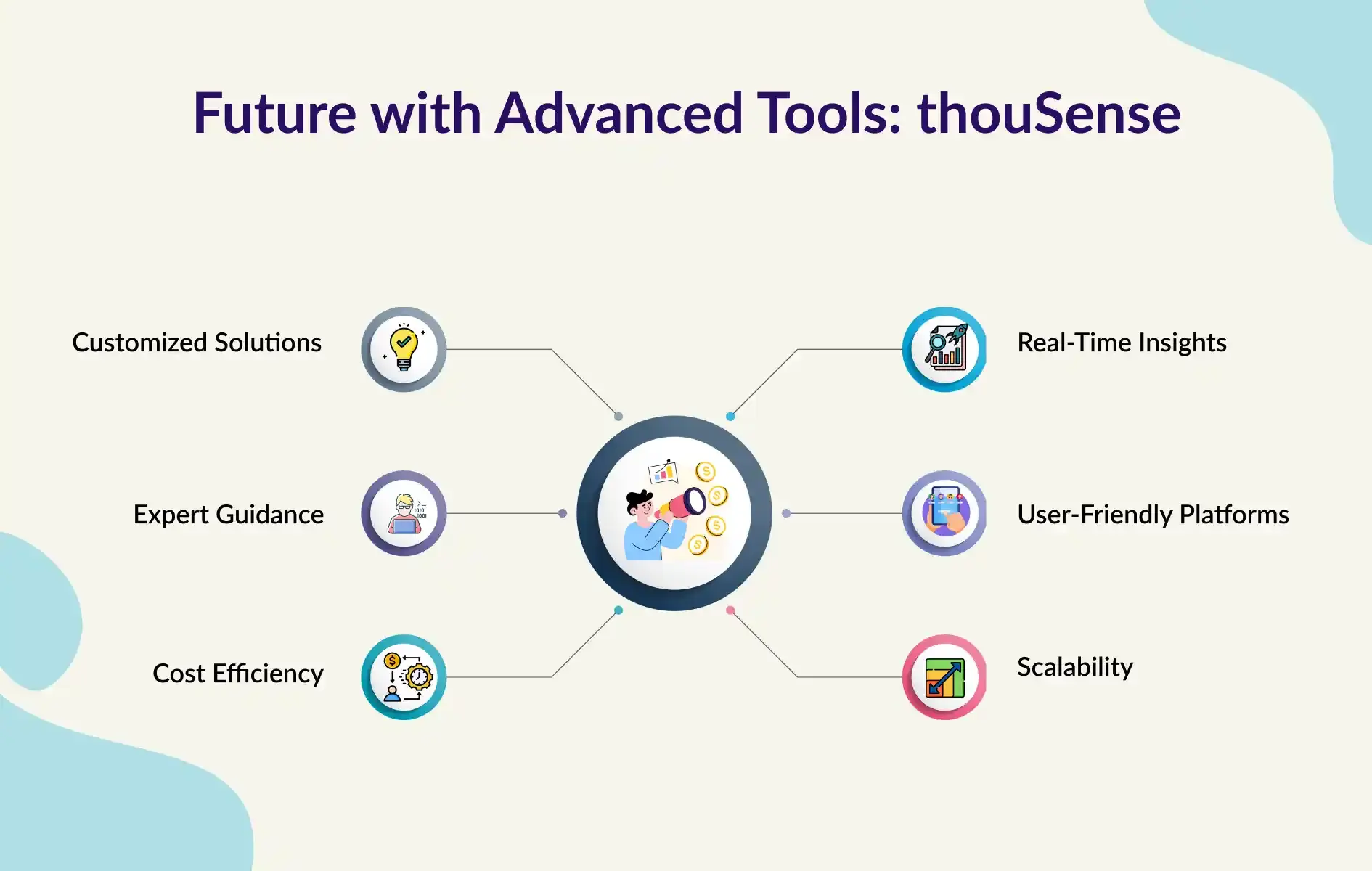AI vs. Traditional Demand Forecasting Which is Better | thouSense

Demand forecasting has always been a vital component for all kinds of businesses. Especially for businesses aiming to stay competitive in today’s dynamic market. But who wouldn’t want to stand out in today’s time?
Every business finds its way to be the best. So for this, demand forecasting seemingly appears to be necessary to help them take the ‘best’ next step. This starts with choosing the best demand forecasting tools itself.
Demand forecasting, as long as we all can remember was done manually. This gave a lot of clarity and insight. However, with the advent of technology, the birth of AI 🤖 inevitably took hold over all these traditional methods.
Now, which one would you choose for your business? Not sure?🤔 Don’t know which one is better? Well, that’s what you are going to find out from this article!
So, let's dive deeper and compare these methodologies on various parameters to determine the ultimate winner.

1. Accuracy: The Foundation of Demand Forecasting
Accuracy is the heart of demand forecasting. It empowers businesses to optimize inventory, minimize waste, and improve customer satisfaction. Let’s see how traditional and AI-driven approaches fare.
Traditional Demand Forecasting:
Relies on statistical models like linear regression and time-series analysis to predict demand. While straightforward, these methods falter in dynamic markets.
● Struggles to adapt to real-time factors like social media trends or economic shifts.
● Requires frequent manual updates, making it less responsive.
AI Demand Forecasting:
Leverages machine learning to analyze vast datasets, uncovering complex patterns beyond human capability.
● Integrates diverse data sources like customer sentiment, competitor pricing, and weather data for precision.
● Automatically learns and evolves, eliminating the need for constant manual intervention.
Verdict: AI’s ability to adapt and its precision makes it the clear choice for businesses prioritizing accuracy.
2. Flexibility and Scalability: Adapting to Market Needs
In today’s fast-paced world, flexibility and scalability are non-negotiable.
Traditional Systems:
● Rigid and reliant on pre-set models, making it hard to quickly incorporate new variables.
● Scaling requires significant manual effort and expertise, which can be slow and error-prone.
AI-Powered Solutions:
● Highly flexible, easily customizing forecasts for various contexts.
● Effortlessly scalable, processing massive datasets in seconds.
● Integrates real-time data for instant insights, ideal for businesses with diverse product lines or markets.
Verdict: AI’s adaptability gives growing and dynamic businesses a significant advantage.
3. Speed: Timeliness Matters
In demand forecasting, speed is essential. Delayed insights can lead to missed opportunities.
Traditional Forecasting:
● Time-intensive, requiring days or weeks to gather data and produce forecasts.
● Manual interventions slow down decision-making.
AI Forecasting:
● Processes data and delivers forecasts in real-time, enabling rapid decision-making.
● Operates autonomously, ensuring timely responses to market shifts.
Verdict: For industries like e-commerce and tech, where timing is critical, AI delivers unparalleled speed.
4. Cost-Efficiency: Balancing Investment and Returns
Cost is a key factor when choosing a forecasting method.
Traditional Systems:
● Initially appears cost-effective but incurs high operational costs due to manual adjustments and errors.
● Dependence on analysts adds to expenses.
AI Forecasting:
● Requires a higher initial investment but offers long-term savings through reduced human intervention and enhanced accuracy.
● Minimizes costly errors like overstocking or stockouts, improving profitability.
Verdict: Despite a higher upfront cost, AI is a more cost-effective solution over time.
5. Data Utilization: Making the Most of Information
Efficient data use is crucial for accurate forecasts.
Traditional Methods:
● Limited to structured data, missing out on insights from unstructured sources.
● Primarily reliant on historical data, ignoring real-time changes.
● Manual data cleaning increases the risk of inaccuracies.
AI Systems:
● Seamlessly process structured and unstructured data, identifying hidden trends.
● Incorporate diverse sources like social media, IoT devices, and economic reports.
● Automated processes ensure clean, reliable data.
Verdict: AI’s superior data-handling capabilities make it transformative for modern businesses.
6. Usability and Learning Curve
Ease of use determines how effectively a tool integrates into a team’s workflow.
Traditional Tools:
● Require statistical expertise, resulting in a steep learning curve.
● Slow onboarding due to extensive training requirements.
● Lack of visual insights makes data interpretation challenging.
AI Tools:
● User-friendly with intuitive dashboards requiring minimal technical expertise.
● Accelerate adoption with self-explanatory interfaces and detailed visualizations.
Verdict: AI tools make forecasting accessible and actionable for all team members.
The Final Verdict
When evaluating demand forecasting methods, AI consistently emerges as the superior choice across all key parameters. Its unmatched combination of speed, accuracy, flexibility, and scalability makes it indispensable for modern businesses.
Traditional Forecasting: While it has been a reliable tool in the past, it struggles to adapt to today’s fast-changing markets and complex data environments. Its reliance on manual processes and static models limits its effectiveness.
AI Forecasting: Offers a revolutionary approach, leveraging machine learning to deliver precise, real-time forecasts with minimal human intervention. Its ability to adapt, scale, and process diverse data sources positions it as the future of demand forecasting.
Comparative Overview Table
|
Parameter |
Traditional
Forecasting |
AI
Forecasting |
|
Accuracy |
Relies on historical trends |
Analyzes diverse, real-time data |
|
Flexibility |
Limited by rigid models |
Highly adaptable |
|
Speed |
Time-intensive |
Real-time forecasting |
|
Cost-Efficiency |
High manual costs over time |
Long-term savings |
|
Data
Utilization |
Limited to structured data |
Processes diverse datasets |
|
Usability |
Steep learning curve |
User-friendly |
Embracing the Future with Advanced Tools

As businesses evolve, demand forecasting tools must keep pace. Modern tools leverage AI to deliver superior insights, empowering businesses to make informed decisions. thouSense plays a vital role in this transformation by providing advanced AI-driven forecasting services that cater to modern needs.
● Customized Solutions: thouSense creates tailored forecasting tools based on specific business requirements.
● Real-Time Insights: They use AI to analyze real-time data, ensuring businesses always have up-to-date forecasts.
● Expert Guidance: Their team combines technical expertise with industry experience to deliver reliable solutions.
● User-Friendly Platforms: thouSense’s platforms are easy to use, ensuring quick adoption by teams.
● Cost Efficiency: They help businesses save money by reducing forecasting errors and operational inefficiencies.
● Scalability: Their solutions grow with your business, adapting to increasing complexity and demands.
With thouSense, businesses can confidently embrace the future, leveraging AI to stay competitive and resilient.
Conclusion
So, as we can pretty much tell from this article AI has outshined traditional methods across every parameter. However, choosing the right demand forecasting method is crucial for success. Traditional methods have their place, but they often fall short in dynamic markets. AI brings accuracy, speed, and adaptability to the table. It helps businesses respond to changes and make better decisions. With thouSense, you get tailored AI solutions designed to meet your needs. Their expertise ensures you stay ahead of the competition and achieve sustainable growth.
FAQs
Q: Can traditional methods be as effective as AI for smaller businesses?
Traditional methods work well for simple forecasting needs, but AI provides scalability and adaptability as businesses grow.
Q: Is AI-based demand forecasting expensive for startups?
While AI tools have an upfront cost, their long-term benefits often outweigh initial expenses, making them a smart investment for startups.
Q: How does AI handle sudden market disruptions?
AI integrates real-time data, enabling businesses to respond swiftly to unexpected changes and maintain accuracy in forecasts.
Q. What is thouSense?
thouSense uses AI and machine learning to help small and medium businesses. It helps them to improve demand forecasts and manage supply chains better. Built by experts, it offers proven solutions for optimizing supply chain efficiency.
Q. Can small businesses use thouSense?
Yes, thouSense is designed for businesses of all sizes.